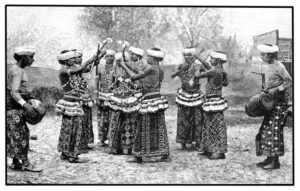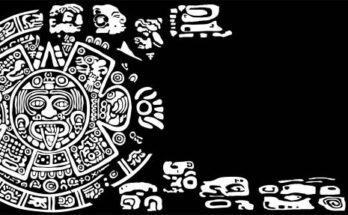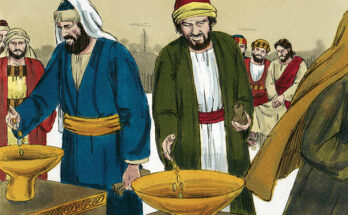The intersection of women and religion is a multifaceted and dynamic field of study, exploring the roles, rights, and experiences of women within diverse religious traditions. This article aims to delve into the complex relationship between women and religion, examining how religious beliefs, practices, and institutions have both empowered and constrained women throughout history and across various cultures.
Historical Perspectives
 (Photo from iStock)
(Photo from iStock)
To understand the current dynamics of women and religion, it is essential to explore historical perspectives. Across different civilizations, the status and roles of women within religious contexts have varied significantly. In ancient societies, some goddess-centered religions recognized the divine feminine, emphasizing the significance of women in spiritual and societal realms. However, as monotheistic religions emerged, patriarchal structures often became dominant, influencing the roles assigned to women.
- Patriarchy and Women’s Subordination: In many traditional religious frameworks, patriarchal norms have contributed to the subordination of women. Interpretations of religious texts and teachings, influenced by cultural and historical contexts, have been used to justify unequal treatment and restrictions on women. Examples include restrictions on women’s participation in religious leadership roles, limitations on their autonomy, and the enforcement of modesty codes.
- Religious Texts and Women’s Status: The interpretation of sacred texts has played a crucial role in shaping attitudes towards women. Some religious texts contain passages that, when taken out of context or interpreted narrowly, have been used to justify discriminatory practices against women. On the other hand, scholars argue that a more nuanced examination of these texts can reveal empowering messages and support for women’s dignity and equality.
Contemporary Perspectives
As societies evolve, so too does the relationship between women and religion. Contemporary perspectives highlight both the challenges and opportunities for women within religious contexts.
- Women’s Empowerment Movements: Over the past century, women within various religious traditions have spearheaded movements advocating for gender equality and challenging patriarchal norms. These movements, often rooted in religious principles themselves, seek to reinterpret and reform religious practices to be more inclusive and empowering for women. The push for women’s ordination in Christian denominations, the advocacy for women’s rights within Islamic communities, and the promotion of gender-inclusive spirituality are all examples of these efforts.
- Religious Leadership for Women: In some religious traditions, strides have been made in expanding opportunities for women to assume leadership roles. Progressive movements within Judaism, Christianity, Islam, Hinduism, and Buddhism have seen women breaking barriers to become religious leaders, scholars, and clergy. However, challenges persist, and the extent to which women can hold leadership positions varies widely among different denominations and sects.
- Feminist Theologies: Feminist theologies have emerged as a critical framework for reinterpreting religious traditions from a gender-conscious perspective. These theologies question traditional interpretations of sacred texts, challenge patriarchal structures, and seek to rediscover the divine feminine within religious narratives. By reconceptualizing religious symbols and reinterpreting scriptures, feminist theologies contribute to fostering a more egalitarian relationship between women and religion.
Challenges Faced by Women
 (Photo from iStock)
(Photo from iStock)
Some of the ongoing issues include:
- Gender-Based Violence: Women in certain religious communities face the risk of gender-based violence, often justified by distorted interpretations of religious teachings. Practices such as female genital mutilation, forced marriages, and honor killings continue to be deeply rooted in some societies, highlighting the urgent need for a reevaluation of cultural and religious norms.
- Restrictions on Reproductive Rights: Religious beliefs can influence societal attitudes towards reproductive rights, leading to restrictions on family planning, contraception, and abortion. These limitations can disproportionately affect women, limiting their autonomy over their bodies and reproductive choices.
- Unequal Access to Education: In some religiously conservative societies, women may face barriers to education, limiting their opportunities for personal and professional development. Access to education is a key factor in empowering women and challenging traditional gender roles.
- Limited Participation in Religious Rituals: Many religious traditions have historically restricted women’s participation in certain rituals and ceremonies. These limitations, whether imposed by religious authorities or cultural norms, contribute to the perpetuation of gender-based disparities within religious communities.
Positive Developments
Despite the challenges, there are positive developments that signal a changing landscape for women within religious contexts.
- Interfaith Dialogue on Gender Equality: Interfaith dialogue has become a platform for discussing and promoting gender equality. Within and across religious traditions. Leaders from various faiths have engaged in conversations about the role of women. Seeking common ground and shared values that can support the empowerment of women.
- Women’s Interfaith Networks: Women-led interfaith networks have emerged as powerful advocates for gender equality. These networks provide a space for women from different religious backgrounds to collaborate. Share experiences, and work towards common goals, fostering a sense of solidarity and mutual support.
- Religious Institutions Addressing Gender Inequality: Some religious institutions have recognized the need to address gender inequality within their structures. Efforts to revise religious teachings, promote inclusivity, and provide equal opportunities for women. In leadership positions are steps towards creating more equitable religious communities.
Conclusion
The relationship between women and religion is a complex tapestry woven with historical legacies, cultural influences, and evolving theological perspectives. While challenges persist, women within religious traditions continue to contribute to and lead movements for gender equality. Challenging patriarchal norms and advocating for a more inclusive interpretation of religious teachings.
The ongoing dialogue between women and religion is crucial for fostering understanding. Dismantling discriminatory practices. And creating spaces where women can fully participate in spiritual, religious, and community life. As societies continue to evolve, the empowerment of women within religious contexts remains a dynamic. And ongoing process, shaped by the interplay of religious beliefs, cultural norms. And the tireless efforts of women them selves.
In conclusion, the intricate relationship between women and religion reflects a continual negotiation of power dynamics, societal expectations. And evolving theological interpretations. As we navigate the complexities of this intersection, fostering inclusivity. Challenging ingrained biases, and promoting open dialogue will be vital in shaping a more equitable and empowering future. Eventually, for women within religious contexts.




